P2730
Forcing Cold-Hardy Bulbs Indoors
What Is “Forcing”?
Forcing bulbs to bloom refers to manipulating their bloom time. “Forcing” sounds as though we are causing the plant discomfort, but we’re actually providing the environmental conditions needed for hardy spring bulbs to bloom earlier than normal.
Manipulating the environment to “trick” bulbs into thinking spring has arrived when it is still the middle of winter is a great project for all ages. The rewards will be the sights and scents of colorful, cheery spring flowering bulbs brightening the winter home while it is still cold and dreary outside. See Figure 1.

Bulbs that Need No Chilling to Flower
Many people are familiar with forcing paperwhite narcissus and amaryllis bulbs to flower. These are the easiest bulbs to coax into flowering because they have no chilling requirement. This publication will deal only with forcing cold-hardy bulbs. For instructions on amaryllis bulbs, see MSU Extension Publication 2309 Holiday Houseplants.
Hardy Bulbs for Forcing
The most common bulbs for forcing are crocuses (Crocus spp.), Figure 2; daffodils (Narcissus spp.), Figure 3; hyacinths (Hyacinthus spp.), Figure 4; and tulips (Tulipa spp.), Figure 5. Crocuses are actually not bulbs but corms, but for this publication, “bulb” will be used to include corms and tubers. See Table 1 for varietal recommendations of these bulbs for forcing.
Other hardy bulbs that can be forced include dwarf iris (Iris reticulata), Dutch iris (Iris x hollandica), grape hyacinth (Muscari spp.), glory of the snow (Chionodoxa luciliae), snowdrop (Galanthus nivalis), star of Bethlehem (Ornithogalum spp.), and summer snowflake (Leucojum aestivum). Using the term “bulb” loosely, other varieties that could be forced are winter aconite (Eranthis hyemalis) and the windflowers Anemone coronaria and Anemone blanda.
Purchasing
Make your fall bulb selections as soon as they are available at your local garden center. If you are ordering for delivery by mail, be sure to purchase early to get the best selection. When purchasing bulbs locally, choose large, healthy, firm bulbs. Avoid those that are soft, blemished, or small. For daffodils, pick double-nosed bulbs for more blooms. Tulip bulbs should have intact skins (tunics) to prevent possible disease problems. Although Table 1 lists a selection of forcing varieties for tulips, crocuses, hyacinths, and daffodils, read the labels of the bulbs or the catalog descriptions before purchasing. There are many varieties of these and other bulbs that are suitable for forcing.
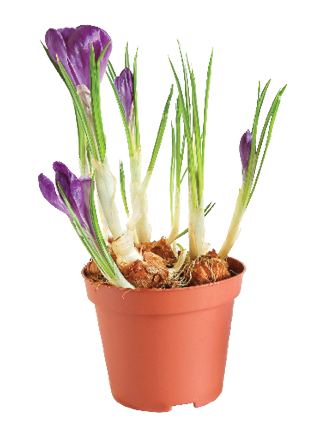

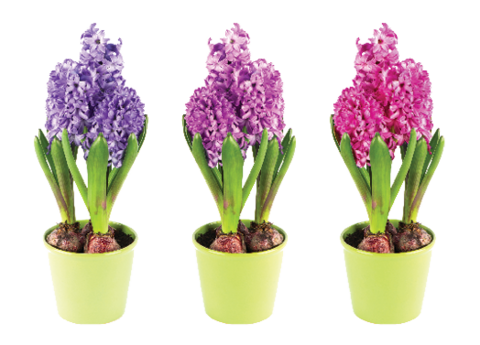
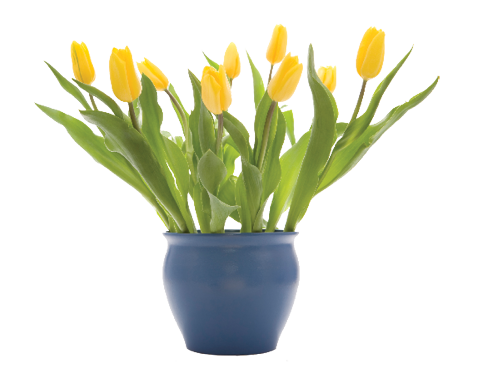
Table 1. Recommended bulb varieties for forcing
Check the labels of other varieties for more suitable options.
|
Common Name |
Variety |
|
Tulip* |
Apricot Beauty, Shirley, Attila, Bing Crosby, Jingle Bells, Princess Irene, Monsella, Estella Rijnveld, Blue Eyes, Salmon Pearl, Negrita, White Dream, Red Emperor, White Emperor, Orange Emperor, Pink Emperor, Yellow Emperor |
|
Crocus |
Flower Record, Peter Pan, Pickwick, Remembrance, Yellow Mammoth, Jeanne d’Arc, Purpurea Grandiflora |
|
Hyacinth |
All varieties force well |
|
Daffodil** |
Barrett Browning, Bridal Gown, Carlton, February Gold, Flower Record, Mount Hood, Dutch Master, Ice Follies, Salome, Pink Charm, Tete-a-Tete, Jenny, Cheerfulness |
*Tulip types that can be forced include the Triumph, Single Early, Double Early, and Darwin hybrids.
**Miniature daffodils are particularly easy to force and require fewer cooling weeks.
Planting
Bulbs can be planted anytime from mid-September to December, depending on the desired flowering date and the length of storage required. Bulbs should be planted in September to have them flower in December; mid-October for flowers in February; and mid-November for March and April flowers.
To stagger bloom times, you may have to store your bulbs in a cool place before potting them. Recommended storage temperatures are 35 to 55°F. The vegetable crisper of your refrigerator would work. Store in mesh or paper bags, and do not store them near ripening fruits or vegetables. These produce ethylene gas, which can be harmful to the bulbs. Because some bulbs are poisonous, this storage method is not recommended for households with young children.
A soilless potting medium is recommended. These can be purchased from garden centers or nurseries. Soilless mixes retain moisture but allow excess water to drain away. Any container or pot with a drainage hole will work. Collecting interesting and colorful containers from flea markets and other sources adds to the overall beauty of the display. When forcing larger types of daffodils and tulips, select heavier pots that will keep these top-heavy plants from toppling over. Bulbs have enough stored food to support the forthcoming flowers and roots, so no fertilizer is necessary.
If the mix is dry, moisten it first in a large container. Select bulbs of a similar size and the same variety for each pot so that you will get similar-sized flowers. Layer the pot with enough potting mix so that bulbs will be slightly below the rim of the pot. Place the bulbs closely together (almost touching) in the pot. The number of bulbs used will depend on the diameter of the container.
Small bulbs can be completely covered with mix, but larger bulbs like daffodils, tulips, and hyacinths can be left with their tops exposed, particularly if your pot is small (Figure 6). Tulip bulbs should be placed so that the flat side of the bulb faces
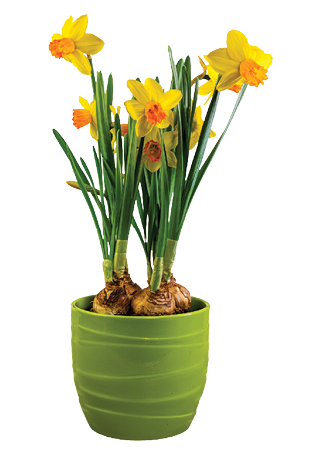
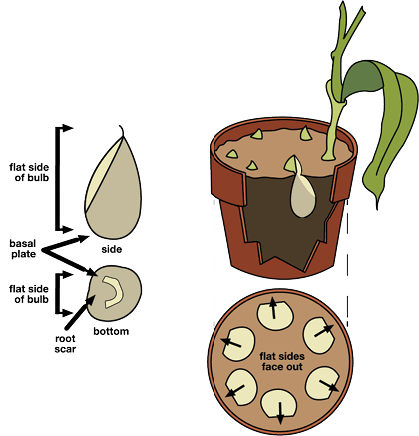
Table. 2. Recommended range of cooling weeks required for some hardy bulbs.
Whether the bulbs are ready earlier or later in this range will depend on variety, type, and cooling temperatures. Check pots as the early end of the cooling range approaches to see if roots have protruded from the drainage hole. This is the best indicator of when the pots are ready to remove from cool storage.
|
Common name |
Weeks |
Common name |
Weeks |
|
Tulip |
14–18 |
Daffodil* |
14–17 |
|
Crocus |
12–14 |
Glory-of-the-Snow |
10–14 |
|
Windflower |
8–12 |
Grape Hyacinth |
8–12 |
|
Hyacinth |
11–14 |
Summer Snowflake |
10–12 |
|
Common Snowdrop |
12–14 |
Winter Aconite |
8–12 |
|
Dwarf Iris |
10–14 |
Star of Bethlehem |
12–14 |
*Miniature daffodils require fewer cooling weeks than the larger types; 10 to 12 weeks is usually enough.
If you store your bulbs in the refrigerator for 2 to 3 weeks before potting, remember to subtract this time from the total weeks of cooling. General temperature recommendations are to store potted bulbs between 35 and 50°F.
Finding a place to maintain and control temperature is the biggest challenge of forcing bulbs for early bloom. Unheated utility rooms, garages, or basements, as well as crawl spaces or cold frames, have been known to provide success.
In coastal and southern Mississippi, temperatures do not remain cool enough for the necessary duration to achieve flowering. In these areas, an excellent option is a second refrigerator. Some Mississippi gardeners have had success leaving pots outside and letting nature do the rest. If you try this, be sure to insulate the pots by covering with a loose mulch of leaves or straw. The drawback to this is lack of temperature control. Fortunately, this system works if the temperature does not stray too far above or below 45°F during the cooling period. Another drawback is that rodents may find and consume your bulbs. To prevent this, cover the tops of the pots with hardware cloth. Wherever bulbs are stored during the cooling period, make sure to protect them from temperatures below 25°F. Keep the pots watered during the cooling process.
Bringing the Bulbs into Bloom
As the recommended end of the cooling period approaches, begin to check the pots for roots protruding from the drainage holes. This is the sign that bulbs are ready to be transferred to warmer temperatures for floral development. Top growth is not a good indicator of readiness because bulbs will sprout when roots have not fully developed. Once bulbs are fully rooted, bring them out of cool storage and into a bright, cool room (60 to 65°F).
Don’t worry if the pots have white or yellow shoots when you bring them out of storage, because light will quickly turn them green. As the foliage and stems begin to emerge and grow, keeping them under bright, cool conditions will encourage compact growth.
Exposing plants to higher temperatures (65 to 70°F) will speed the process of growth and flowering. Rotate the pots regularly to promote straight, upright growth. Remember to keep the growing medium moist.
The amount of time it takes a bulb to flower depends on the environmental conditions of the home, but the average is 3 to 4 weeks. When flower buds show color, you can prolong the bloom period by moving pots into indirect light. Warm temperatures and low indoor humidity will cause plants to decline more quickly than they would if grown outdoors. Keeping pots out of direct sunlight and moving them into a cool room at night helps prolong bloom.
Care After Flowering
Forcing depletes the stored sugars in the bulb. If these cannot be replenished by providing conditions that keep the foliage actively growing as long as possible, discard the bulbs after flowering.
If you would like to keep the plants after flowering, fertilize the pots regularly with a soluble fertilizer and keep them in bright light. Follow fertilizer label directions. After the foliage has begun to yellow and die back, you can plant the bulbs into the garden. Do not be disappointed if they do not perform well.
With a little planning and effort, you can create an early spring indoors by forcing your own succession of hardy bulbs.
Publication 2730 (POD-10-22)
Distributed by Jim DelPrince, PhD, Assistant Extension Professor, Coastal Research and Extension Center. Portions of this publication were taken from a discontinued publication, P2300 Forcing Bulbs Indoors.
